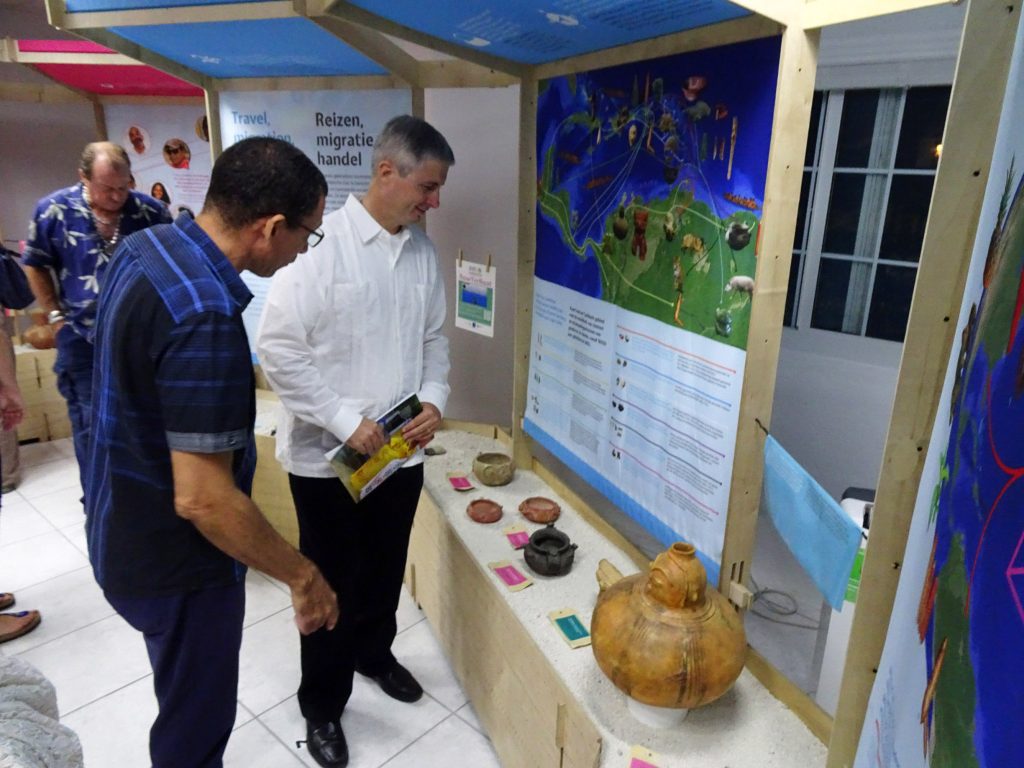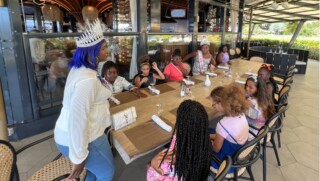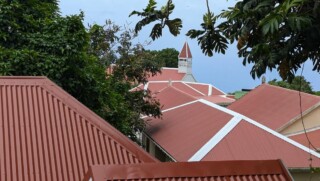Caribbean Ties exhibition opens at Saba Heritage Center

The Bottom, Saba – The Saba Heritage Center in Windwardside since last week has become the temporary home for the “Caribbean Ties: Connected People, Then and Now” international exhibition, facilitated by Leiden University and the Saba Archaeological Center (SABARC). The exhibition will remain on Saba until May 2020.
The exhibition, which was officially opened by Island Governor Jonathan Johnson on Wednesday evening, December 4, shows the connections between past and present indigenous cultures and the current multi-ethnic communities, and explores the impact of indigenous heritage on the present culture.
Welcoming the guests at the reception, new SABARC Director Angus Martin said he was happy to share the experience of celebrating the indigenous heritage of the Caribbean. “The exhibition Caribbean Tiesbegan long before today, decades, centuries, millennia ago. The people, the ideas, the artifacts, the pots, the beliefs go far beyond any of us here today to the peoples who roamed this landscape, creating what we celebrate here today,” said Martin.
“Though we know so little about them, we hear their echoes in the roar of a fisherman’s conch shell, or taste their spices in a pepper pot, or cassava bread or in a cold glass of mauby. Or feel a presence as we gaze into a sunset on Mt. Scenery thinking who else would have stood on this same spot dreaming of the horizon,” said the new SABARC Director, who thanked Dr. Corinne Hofman of Leiden University for her role in the NEXUS1492 project that produced the exhibition, and the many researchers, curators, helpers, designers of the exhibition.
NEXUS1492
Project coordinator of the Caribbean Ties exhibition Tibisay Sankatsing Nava, originally from Aruba, explained that the exhibition presented the results of the NEXUS1492 project led by Leiden University and financed by the European Research Council over the past six years. It is also based on 30 years of archaeological research by Leiden University professors Hofman and Menno Hoogland. “Their research started here on Saba in 1987 with excavations at Spring Bay, Kelbey’s Ridge, The Bottom and later between 2001 and 2006 at Plum Piece and in 2016 at Fort Bay Ridge,” said Sankatsing Nava.
Outside of Saba, Caribbean Ties is presented simultaneously in 12 Caribbean countries, including Aruba, Cuba, Barbados, Martinique, Haiti, the Dominican Republic, Puerto Rico, Dominica, Grenada, Suriname and in the Netherlands. It deals with the transformations of indigenous cultures and societies on the eve of European invasion. Visitors to the exhibition on Saba will not only see local artefacts but also replicas of artefacts from across the Caribbean.
“Caribbean Ties places Saba within the context of a vast network of mobility and exchange that existed from 6000 BC onwards to European colonization and beyond. It also shows the continuities, the persistence and mixing of indigenous traditions with European, African and others in the current multi-cultural archipelago,” explained Sankatsing Nava.
Protect heritage
The exhibition also highlights the importance of the protection and valorization of heritage, and especially heritage that is at risk through increased natural impacts like climate change, sea level rise, coastal erosion and hurricanes and through increased human impacts, like construction activities, which accelerate the destruction of archaeological sites.
Island Governor Johnson said the Public Entity Saba was proud to support an initiative such as this one which helps to create awareness among people of their own culture as well as that of others. “It is important to know where we come from so that we can identify how we want to move forward, creating a stable future, while recognizing and honoring our indigenous heritage.’
Johnson said that indigeneity made an impression on everyone, whether hailing from Saba or abroad. “Awareness of this indigenous heritage is imperative for future generations to be able to sustain cultural indigenous traditions.”
SABARC Board Member Vito Charles was happy to announce that with a new director, the Saba Heritage Center was now open again. “We aim to make Saba’s heritage accessible. We are here for the community. The goal is to make people fall in love with our history.”
The Caribbean Ties exhibition will be at the Heritage Center until May 2020. The opening hours of the Heritage Center are from 10 AM to 4 PM.












